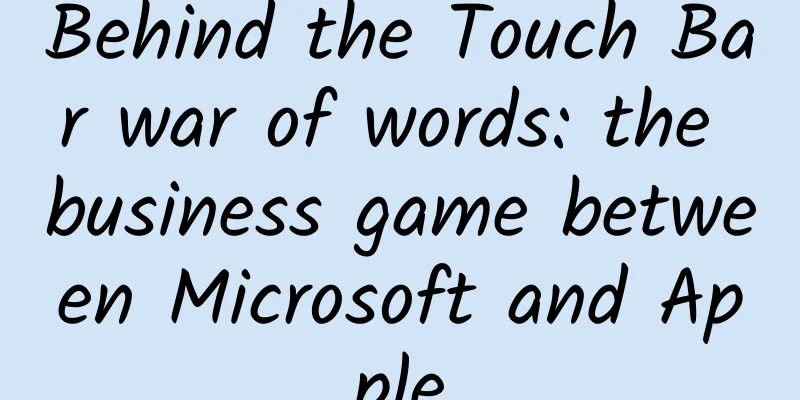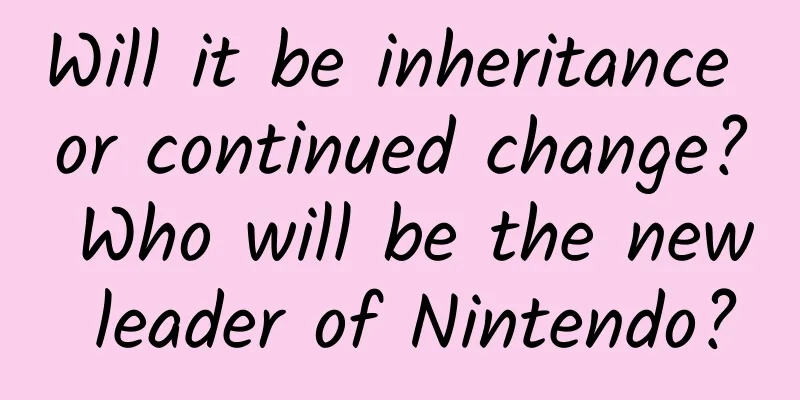Behind the Touch Bar war of words: the business game between Microsoft and Apple

|
=Recently, Microsoft and Apple have successively released their own new PC products. Among them, the Touch Bar adopted by Apple's new Macbook has not only become the focus of the industry, but also triggered a war of words between the two sides. Brain Hall, vice president of the Surface Marketing Department and one of Microsoft's senior executives, tweeted that judging from the Touch Bar, Apple will definitely launch a detachable touch-screen Mac in the future, similar to the Surface Pro 4 and Surface Book devices, and welcomes Apple to join the battle of touch-screen 2-in-1 devices. Apple's chief designer Jonathan Ive said in an interview that for Mac, touch screens are not particularly useful, and we decided not to use this technology on Mac devices a few years ago. So the question is, why do Microsoft and Apple have a special liking for the Touch Bar in each other's newly released PCs, and even go so far as to start a war of words? Regarding the Touch Bar, some analysts believe that, to some extent, the essence of the Touch Bar and the touch screen is to allow users to replace the mouse cursor by clicking with their fingers. However, we believe that the Touch Bar is essentially different from the so-called touch screen or the tablet/PC 2-in-1 notebook with a touch screen. First of all, in terms of the control method, the Touch Bar is still in the traditional keyboard area of the PC, and the control is still completed in the keyboard area. In contrast, the touch operation of the tablet/PC 2-in-1 notebook is on the screen, which means that from the perspective of product cost (such as the screen, which accounts for one of the largest costs of the PC), the touch screen of the tablet/PC 2-in-1 notebook is higher than that of Apple's Macbook; secondly, from the perspective of application, although the Touch Bar can complete many functions through touch, at least for now, it is far less than the functions of the tablet/PC 2-in-1 notebook (at least in the touch-based tablet mode); finally, the most important point is that the Touch Bar still supports the original Mac OS (does not require iOS or the so-called fusion operating system alone), while the tablet/PC 2-in-1 notebook requires a fusion operating system (such as Microsoft's Windows 10, Windows 8 series). I wonder what the industry thinks after seeing the difference between the Macbook with Touch Bar and the tablet/PC 2-in-1 notebook? We believe that although Apple has adopted the Touch Bar that seems to support touch, it is still strictly distinguished from a real tablet. The reason is simple. Apple has the iPad tablet product line with the best operating experience and the largest market share. How can it bring this experience to the Mac and let the Mac compete with its own iPad product line? Secondly, from a cost perspective, the PC that seems to have the same touch experience (Macbook with Touch Bar and tablet/PC 2-in-1 notebook with touch screen, such as Surfacebook), at the same price range, obviously Apple's Macbook can get higher profits. Finally, despite the introduction of the Touch Bar with touch function, Apple still maintains the independence of the two ecosystems of Mac OS and iOS. This not only allows the two ecosystems to have different experiences and user groups, thereby bringing different revenues and profits, but also avoids the user usage and experience problems that may be caused by the integration of the two ecosystems, or even poor user experience. This has been verified in Microsoft's previous Windows 8 series of tablet/PC 2-in-1 notebooks. The so-called front of oneself is the back of the opponent. For Microsoft, in order to cope with the impact of iPad and the decline of PC market, it launched Windows 8, a fusion operating system that supports tablets and PCs, but in the end it failed to please tablet users and caused great confusion to traditional PC users (such as the cancellation of the start menu and the magnet-style desktop layout). Finally, Windows 10 came, and the fusion experience was greatly improved compared with Windows 8. However, the launch of Apple's Touch Bar has undoubtedly greatly reduced Microsoft's efforts and value in Windows 10. This is also the main reason why Microsoft's senior management almost "provoked" Apple to launch a full touch version of Mac in the future. That is, they hope that after Apple Mac becomes a true tablet/PC two-in-one notebook, it will use the new fusion system to compete with Windows 10. Since Microsoft has developed the fusion system before Apple (the previous Windows 8 series), it seems to believe that it can beat Apple in the fusion experience. Even if it is not as good as Apple in the fusion experience, it can use Apple's Mac to let Apple compare between iPad and Mac by itself, and then create a gap in experience and cannibalize each other, so that Microsoft can benefit from it. After all, Microsoft has not given up on the tablet market. Lastly, and most importantly, once Apple launches a Mac with a touchscreen function, its previously independent and competitive Mac OS and iOS ecosystems will either sacrifice one ecosystem (such as the introduction of iOS to Mac as widely expected by the industry before), or use a new integrated system to compare the two. If the three coexist, one of them will inevitably appear useless. No matter which result is, it will be beneficial to Microsoft's Windows ecosystem. In summary, we believe that the reason why Apple and Microsoft are at loggerheads over the Touch Bar is far more than a simple touch function. Behind it is a battle of commercial interests involving many products (such as tablets and PCs) and ecosystems. The subsequent actions of either party, especially Apple, may lead to changes in the tablet and PC industries. Will Apple follow Microsoft's "trap" in the future? At least from Jonathan Ive's remarks, Microsoft may have wasted its efforts again. As a winner of Toutiao's Qingyun Plan and Baijiahao's Bai+ Plan, the 2019 Baidu Digital Author of the Year, the Baijiahao's Most Popular Author in the Technology Field, the 2019 Sogou Technology and Culture Author, and the 2021 Baijiahao Quarterly Influential Creator, he has won many awards, including the 2013 Sohu Best Industry Media Person, the 2015 China New Media Entrepreneurship Competition Beijing Third Place, the 2015 Guangmang Experience Award, the 2015 China New Media Entrepreneurship Competition Finals Third Place, and the 2018 Baidu Dynamic Annual Powerful Celebrity. |
<<: Google's new self-driving car skill: three-point turn
Recommend
HTTPS vulnerability exposes 1,500 iOS apps to security vulnerabilities
SourceDNA, an app analytics service company, rele...
How is household electricity generated? Let’s start with Faraday
We cannot live without electricity every day, and...
Application of face stylization technology on mobile terminals
Preface With the explosion of concepts such as th...
Will children become myopic if they face electronic screens for a long time?
Author: Tang Qin, Researcher of Chinese Medical A...
She was imprisoned for 43 years and eventually died in a small pond, but she was so close to returning to the sea
On March 10, Kiska, the " loneliest whale in...
Douyin recommendation review mechanism, see here!
The number of monthly active users of Douyin worl...
Different competitive product analysis about Gudong vs. Yuepaoquan
Before writing about competing products, you shou...
Bees crawling all over the curtains, alligators sneaking into the auto repair shop! What should you do if you encounter dangerous wild animals?
last year Wild Asian elephants escape from Xishua...
How to create a hit event?
Last week, I carried out the second content colle...
Three modes of mobile phone system development by Apple, Google and Microsoft
Since people entered the mobile Internet era to t...
Is Baidu bidding easy to do now? How to do Baidu bidding well?
Both large and medium-sized enterprises and some ...
Why do some advertisements make you want to move after watching them?
Have you seen ads like this: " U2 resin lens...
This “sugar and oil mixture” makes you fatter than drinking oil. Why can’t you stop eating it once you start?
Crispy on the outside and tender on the inside, g...
Taobao operation: How to improve the conversion rate of Taobao details page
As Double Eleven is approaching, merchants are al...
Where is the real world of "The Three-Body Problem"?
Recently, the animation of "The Three-Body P...




![[Edible Fungi Science] Cultural Legends of Lingzhi](/upload/images/67f249ab82a03.webp)




